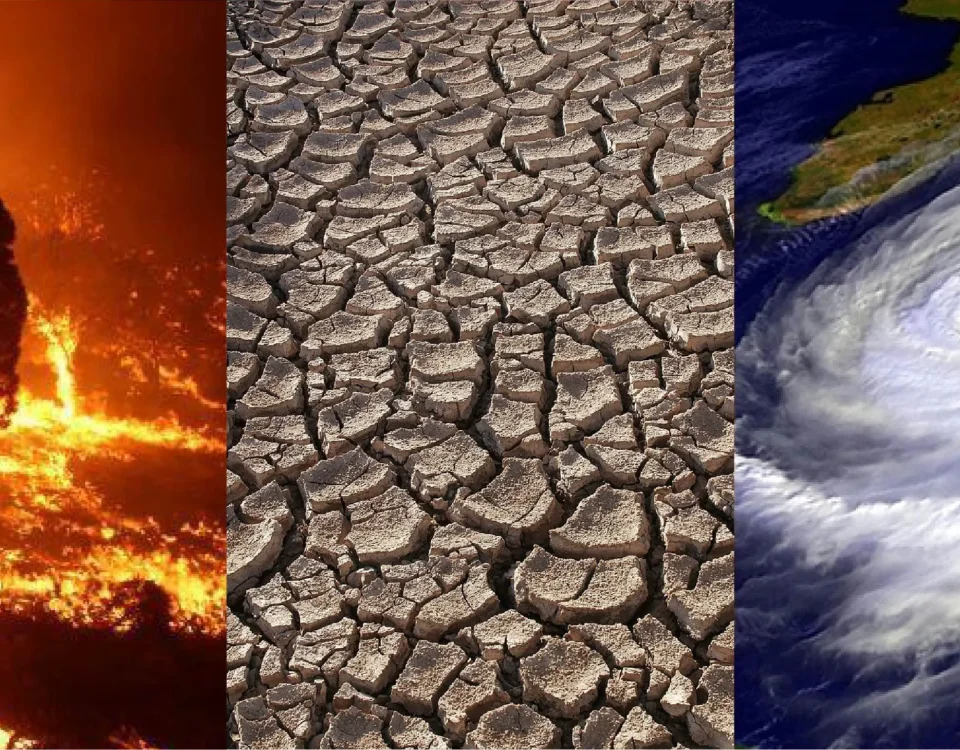
Transforming Punjab Agri Rs174B Package to Overcome Challenges
July 29, 2024
Grain by Grain: The Path of Rice to Our Tables
July 30, 2024
- Increased frequency of extreme weather events
Climate change is causing a noticeable increase in the number of extreme weather events. Higher global temperatures lead to more intense and frequent heat waves, storms, and heavy rains that affect wildlife and nature on land and water. For example, warmer oceans fuel more powerful storms and typhoons that harm people living on the coast, causing storms to increase in intensity and have devastating effects on coastal communities. This rise in extreme weather not only causes immediate damage but also strains emergency services and infrastructure.
- Strong storms and typhoons
Warming of ocean surfaces contributes to more intense storms and typhoons. As ocean temperatures increase, so does the energy available to these storms, leading to increased winds, heavier rainfall, and stronger storms. Recent years have seen record-breaking storms in both intensity and duration. These powerful storms resulted in severe flooding, property damage, and loss of life, highlighting the urgent need for better preparedness and response strategies. Due to which climate change has many effects in the environment, which has many negative effects on the earth and then damages in our life.
- Increased risk of flooding and erosion
A major impact of climate change is on flooding and coastal erosion which is the base effect. Melting glaciers and polar ice contribute to sea level rise, which increases the risk of coastal flooding during hurricanes. Additionally, more intense rainfall events overwhelm drainage systems, resulting in major flooding in urban and rural areas alike. Coastal erosion is rapidly increasing due to rising sea levels and stronger storms, threatening coastal settlements and human settlements. Why are humans helpless in the face of these natural disasters?
4. More frequent and severe wildfires
Warmer temperatures and prolonged droughts, both linked to climate change, play an important role in climate change, contributing to more frequent and severe wildfires. Dry conditions, combined with heat waves, create an environment where vegetation becomes extremely voracious. Wildfires not only destroy large areas of forests and wildlife habitats but also threaten human lives and property. An increase in fire frequency can lead to long-term environmental damage and increased carbon emissions. In the environment where the temperature can increase, then due to the lack of trees, there is an increase, which has no estimate.
- Emerging relationships and recovery challenges
The financial cost of natural disasters is increasing due to the increasing severity and number of these events. The economic burden includes the cost of immediate response and recovery, as well as long-term infrastructure repair and reconstruction efforts. Additionally, climate change-related disasters strain insurance systems and often disproportionately affect vulnerable communities with limited resources. Effective disaster management and adaptation strategies are critical to reducing these financial impacts and building resilience against future events. Due to climate change, we are facing many daily problems due to increase in temperature, more rainfall and reduction of forests and trees.
Trees, forests, humans and crops are affected by Climate Change.
This blog has been written about Alcon Super, its reference is taken from the comments of farmers from the page of Sindh Abadgar Board.



